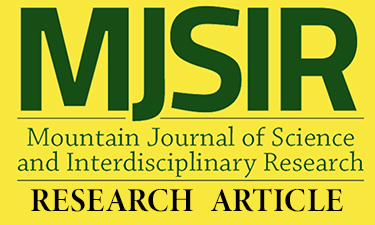Technology Leadership and Technology Integration in Selected Science High Schools in the National Capital Region: Basis for a Proposed Online Training Module
Main Article Content
Abstract
This research assessed the extent of technology leadership of school heads and its relationship to the extent of technology integration of teachers in six selected science high schools in the National Capital Region. The study respondents were six school heads and 273 teachers. The study used validated, pilot tested and reliability-tested survey questionnaires adapted and modified from the Principals Technology Leadership Assessment and the Levels of Teaching Innovation (LoTI) Digital Age Survey. Percentage, weighted mean, Pearson correlation, chi-square, t-test, and ANOVA were used for statistical treatment. Results revealed that the school heads’ extent of technology leadership across all areas ranges from partial to full implementation, and the teachers’ extent of technology integration across all areas is being implemented “most of the time.” The school heads’ profile was not associated with their technology leadership, and only the highest educational attainment was found significantly related to the teachers’ extent of technology integration. Furthermore, the technology leadership of school heads was not significantly related to the technology integration of teachers. The study also revealed no significant differences among school heads when grouped according to their profile. There was a significant difference between teachers’ assessment of and school heads’ self-assessment of their technology leadership.
Article Details
References
Anandan, T., Cederquist, H., & McLeod, S. (2005). Principals technology leadership assessment. UCEA Center for the Advanced Study of Technology Leadership in Education, Minneapolis, MN. www.schooltechleadership.org
Baker, E.W., Al-gahtani, S.S., & Hubona, G.S. (2007). The effects of gender and age on new technology implementation in a developing country: Testing the theory of planned behavior (TPB). Inf. Technol. People, 20, 352-375.
Billheimer, D. (2007). A study of West Virginia principals: Technology standards, professional development, and effective instructional technology leaders.
Creswell, J.W. (1994). Research Design: Qualitative and Quantitative Approaches. Thousand Oaks. CA: Sage.
De Poy, E., & Gitlin, L.N. (2016). Introduction to research: Understanding and applying multiple strategies. Elsevier Inc.
De la Cruz, J.M. (2019). DepEd hiring 10,000 new teachers for 2019, government allots P2.11-billion budget. Business Mirror. https://businessmirror.com.ph/2019/05/10/depedhiring-10000-new-teachers-for-2019-government-allots-p2-11-billion-budget/.
Department of Education. (2011). DepEd Order No. 32. Policies and Guidelines on Training and Development (T&D) Programs and Activities. https://www.deped.gov.ph/2011/03/31/do-32-s-2011-policies-and-guidelines-ontraining-and-development-td-programs-andactivities/
Dolot, A. (2018). The characteristic of Generation Z. e-mentor, 2(74): 44-50. https://doi.org/10.15219 /em74.1351
Esplin, N.L. (2017). Utah elementary principals’ preparation as technology [Unpublished doctoral thesis]. Utah State University.
Espeso, F.J., Nakpil, D., & Tapao, A.C. (2017). Teacher Education Regains Popularity. https://verafiles.org/articles/teacher-educationregainspopularity
Grail Research – A Division of Integreon. (2011). Consumers of Tomorrow: Insights and Observations about Generation Z. www.grailresearch.com/pdf/ContenPodsPdf/Consumers_of_Tomorrow_Insights_and_Observations_About_Generation_Z.pdf
Guiab, M.R., & Ganal, N.N. (2014). Problems and Difficulties Encountered by Students towards Mastering Learning Competencies in Mathematics. Researchers World, 5, 25-37.
Hang, P. (2011). Teachers’ Perceptions of their Principals’ Leadership Capacities. Royal University of Phnom Penh.
Hill, J., Ottem, R., & Deroche, J. (2016). Trends in Public and Private School Principal Demographics and Qualifications: 1987-88 to 2011-12. Stats in Brief. NCES 2016-189. National Center for Education Statistics.
Horn, A.S., & Jang, S.T. (2017). The impact of graduate education on teacher effectiveness: Does a master’s degree matter? Midwestern Higher Education Compact.
Hamzah, M., Nordin, N., Jusoff, K., Karim, R., and Yusof, Y. (2010). A Quantitative Analysis of Malaysian Secondary School Technology Leadership. Management Science and Engineering, 4(2).
International Society for Technology in Education. (2002). National educational technology standards for administrators. http://www.iste.org/Content/NavigationMenu/NETS/ForAdministrators/2002Standards/NETS_for_Administrators_2002_Standards.htm.
Jhingan, A. (2017). Foreword. Leapfrogging to Education 4.0: Student at the Core. India.
Kiboro, K.D. (2018). Influence of teachers’ demographic characteristics on information communication technologies integration in instruction in lower primary schools in Kiambu County, Kenya.
Lai, K. (2000). Health risks with teachers' computer use: some New Zealand observations. Journal of Information Technology for Teacher Education, 9, 303 - 318.
LoTi Connection. (2009). LoTi (Levels of Technology Innovation). http://www.loticonnection.com
Mahdi, H., & Sa'ad Al-Dera, A. (2013). The impact of teachers’ age, gender and experience on the use of information and communication technology in EFL teaching. English Language Teaching, 6(6).
Mateo, J. (2018). DepEd hiring 75,000 new teachers. The Philippine Star. https://www.philstar.com/headlines/2018/05/27/1819032/depedhiring75000-new-teachers.
McGriff, S. (2000). Instructional System Design (ISD): Using the ADDIE Model. Instructional Systems, College of Education, Penn State University
Moersch, C. (2016). Levels of technology implementation (LoTi): A framework for measuring classroom technology use.
Ochada, N.R., & Gempes, G.P. (2018). The Realities of Maintenance and Other Operating Expenses (MOOE) Allocation In Basic Education System: Unheard Voices Of Public School Teachers. International Journal of Scientific & Technology Research, 7, 315-324.
Philippine Congress. (2013). Republic Act No. 10533: Enhanced Basic Education Act of 2013. https://www.officialgazette.gov.ph/2013/05/15/republic-act-no-10533/
Raman, A., Don, Y., & Kasim, A.L. (2014). The Relationship between Principals' Technology Leadership and Teachers' Technology Use in Malaysian Secondary Schools. Asian Social Science, 10, 30.
Scott, G. (2005). Educator perceptions of principal technology leadership competencies . [Unpublished doctoral dissertation]. The University of Oklahoma, Oklahoma.
Thannimalai, R., & Raman, A. (2018). The Influence of Principals' Technology Leadership and Professional Development on Teachers’ Technology Integration in Secondary Schools. Malaysian Journal of Learning and Instruction.
The Technology Integration Matrix. (2005). Background and Development of the TIM. College of Education, University of South Florida. https://fcit.usf.edu/matrix/matrix/background/
Tweed, S. (2013). Technology Implementation: Teacher Age, Experience, SelfEfficacy, and Professional Development as Related to Classroom Technology Integration. East Tennessee State University.
US Department of Education. (2017). Reimagining the Role of Technology in Education. https://tech.ed.gov/files/2017/01/Higher-Ed-NETP.pdf
Yorulmaz, A., & Cal, S. (2016). The Technology Leadership Competencies of Elementary and Secondary School Directors.

